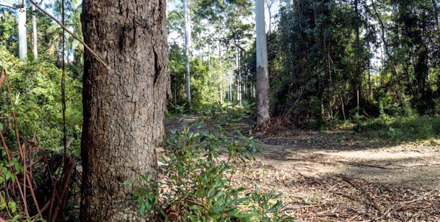
The RFA modernisation paper understates the existing levels of protection for biodiversity in Victoria and misrepresents the role of the state’s native forest timber industry, according to the Institute of Foresters of Australia (IFA). Source: Philip Hopkins for Timberbiz
The paper both downplays the true value of the existing native forest hardwood industry but grossly overstates the potential extent of timber harvesting, says the IFA in its response to Dr Bill Jackson’s independent consultation paper.
The IFA said the paper included private forest in total forest area. This diluted the pre-existing levels of reservation that already apply almost exclusively only to public land forests.
“As the RFA is concerned with only public lands, private forests should not be relevant,” the IFA said.
The paper unduly relied on the ‘State of the Forests Victoria 2018 Report’, which misuses gross available area as a proxy for the net harvestable area of forest. This created the false impression that more than one-third of Victoria’s public forests were open for timber production.
“In reality, after deducting unsuitable areas and management exclusions, the proportion of Victorian public forest being actually managed for the long-term timber supply is just 6%,” the IFA said.
Again, there was undue reliance on the Victorian 2018 State of the Forests report; citing the value of log sales was an inappropriate proxy for the value of the timber industry. In reality, the value of the native timber industry was “a magnitude larger” once the value of wood products from downstream manufacturing was taken into account.
“The use of the word ‘protected’ in relation to CAR (Comprehensive, Adequate and Representative) reserves is problematic given that simply placing forests in reserves does not actually protect them from their key threats,” the IFA said.
These threats – such as unnatural fire regimes, pest plants and animals, and climate change – “transcend land tenure boundaries”.
Specifically, the IFA criticised the paper’s statement that the CAR reserve system covered 49% of Victoria’s remaining forests. However, this figure included private native forests and plantations, which comprise 1.45 million hectares. With the RFAs being only concerned with public forests, it was not relevant to include private native forests.
“When private native forests and plantations are excluded …the CAR reserve system comprises 59% of the state’s public forest area,” the IFA said. Also, a substantial majority of the 41% outside the CAR reserves was not located near the timber industry or was unsuitable and not used for any purpose.
“These areas are effectively acting primarily as conservation reserves. It is for this reason that just 6% of the state’s public forests are being used for long-term timber supply.”
Given this figure, the IFA said the report should clarify just how much of Victoria’s public native forests actually comprise the net harvestable area.
“Relying on proportions of only dedicated reserves substantially understates the reality of forest conservation and creates a false imperative to declare more reserves,” the IFA said.
A more extended version of the IFA paper will be published in the July edition of Australian Forests & Timber.





